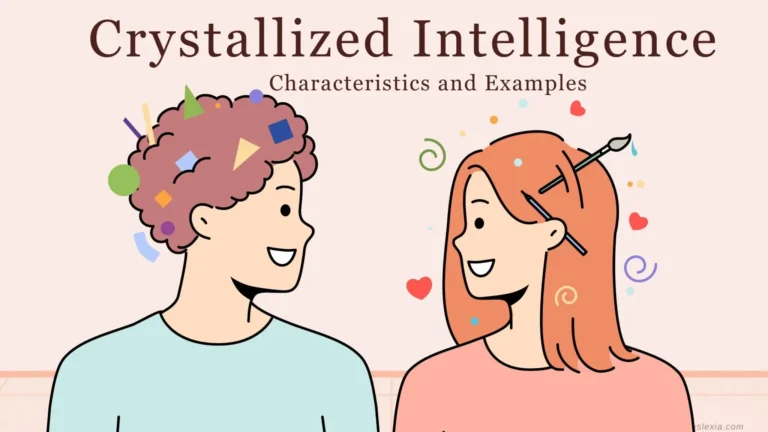Lateral thinking is a fascinating approach to problem-solving that encourages creativity and innovation.
It allows individuals to tackle challenges from unconventional angles, often leading to surprising solutions.
In this article, I will explore the concept of lateral thinking, its significance in solving impossible puzzles, and practical techniques you can apply to enhance your creative thinking skills.
What is Lateral Thinking?
Lateral thinking, a term coined by Edward de Bono in 1967, refers to a method of thinking that seeks to generate ideas and solutions through indirect and creative approaches.
Unlike traditional vertical thinking, which follows a logical, step-by-step process, lateral thinking encourages breaking away from established patterns and exploring new possibilities.
This method is particularly useful when conventional reasoning has failed to produce satisfactory results.
Key Characteristics of Lateral Thinking
- Indirect Approach: Lateral thinking involves looking at a problem from different perspectives rather than following a linear path.
- Creativity: It fosters creativity by encouraging the exploration of unconventional ideas.
- Challenging Assumptions: Lateral thinking prompts individuals to question their assumptions and rethink established norms.
- Generating Alternatives: It emphasizes the importance of generating multiple solutions rather than fixating on a single answer.
Why is Lateral Thinking Important?
Lateral thinking is essential for several reasons:
- Encourages Innovation: In a rapidly changing world, the ability to think creatively is crucial for innovation and progress.
- Problem-Solving: It offers effective strategies for solving complex problems that may not yield to traditional methods.
- Adaptability: Lateral thinking helps individuals adapt to new situations and challenges by promoting flexible thinking.
- Enhanced Collaboration: In group settings, lateral thinking can foster collaboration by encouraging diverse viewpoints and ideas.
Techniques for Practicing Lateral Thinking
Here are some practical techniques to enhance your lateral thinking skills:
1. Brainstorming
Brainstorming is a classic technique for generating ideas.
Gather a group of people and encourage them to share any ideas that come to mind without judgment.
The goal is to create a large pool of ideas, which can be refined later.
2. Provocation
Provocation involves making statements that are intentionally false or absurd to stimulate new thinking.
For example, you might say, “What if we had to solve this problem without using any technology?”
This can lead to innovative solutions that might not have been considered otherwise.
3. Random Input
Using random words or images can help spark new ideas.
Pick a random word from a dictionary and try to connect it to the problem you are trying to solve.
This technique encourages you to think outside the box and make unexpected associations.
4. The Six Thinking Hats
Developed by Edward de Bono, the Six Thinking Hats method encourages looking at a problem from different perspectives.
Each “hat” represents a different mode of thinking:
- White Hat: Focus on data and facts.
- Red Hat: Express feelings and intuitions.
- Black Hat: Identify risks and challenges.
- Yellow Hat: Explore benefits and positive aspects.
- Green Hat: Generate creative ideas.
- Blue Hat: Organize and manage the thinking process.
5. Mind Mapping
Mind mapping is a visual technique that helps organize thoughts and ideas.
Start with a central idea and branch out with related concepts, creating a visual representation of your thoughts.
This method can help you see connections between ideas and generate new insights.
Examples of Lateral Thinking in Action
Lateral thinking has been successfully applied in various fields, from business to art.
Here are a few examples:
1. Business Innovation
Companies like Apple and Google have used lateral thinking to develop innovative products.
For instance, Apple’s focus on user experience and design has set it apart in the technology market.
This approach encourages teams to think creatively about how to meet customer needs.
2. Problem-Solving in Science
Scientists often use lateral thinking to solve complex problems.
For example, the discovery of penicillin by Alexander Fleming was a result of lateral thinking.
Fleming noticed that mold had killed bacteria in a petri dish, leading to the development of antibiotics.
3. Artistic Expression
Artists frequently employ lateral thinking to create unique works.
For instance, Salvador Dalí’s surreal paintings challenge conventional perceptions of reality, prompting viewers to think differently about art and life.
The Relationship Between Lateral Thinking and Cognitive Limits
Cognitive limits refer to the constraints on our ability to perceive, process, and retain information.
Understanding cognitive limits is essential for recognizing how they affect our knowledge and decision-making abilities.
Some key aspects of cognitive limits include:
| Aspect | Description |
|---|---|
| Perception | Limited ability to perceive stimuli from the environment. |
| Attention | Finite capacity to focus on information at any given time. |
| Memory | Constraints on short-term memory capacity affecting retention. |
Strategies for Overcoming Cognitive Limits
To navigate cognitive limits effectively, consider the following strategies:
- Chunking Information: Break down complex information into smaller, manageable units to improve retention.
- Prioritizing Information: Focus on key concepts to reduce cognitive overload.
- Using Visual Aids: Utilize diagrams and charts to clarify complex information.
- Practicing Mindfulness: Engage in mindfulness techniques to enhance focus and attention.
- Taking Breaks: Regular breaks can refresh the mind and prevent cognitive fatigue.
Conclusion
Lateral thinking is a powerful tool for solving impossible puzzles and fostering creativity.
By adopting this approach, individuals can enhance their problem-solving skills and generate innovative solutions.
Understanding the relationship between lateral thinking and cognitive limits can further empower us to navigate challenges effectively.
In a world that often demands creative solutions, lateral thinking remains an essential skill for personal and professional growth.
FAQs About Lateral Thinking
What is lateral thinking?
Lateral thinking is a problem-solving approach that encourages creative and indirect methods of reasoning.
Who coined the term lateral thinking?
The term lateral thinking was coined by Edward de Bono in 1967.
How does lateral thinking differ from vertical thinking?
Lateral thinking focuses on generating creative solutions from unconventional perspectives, while vertical thinking follows a logical, step-by-step process.
What are some techniques for practicing lateral thinking?
Techniques include brainstorming, provocation, random input, the Six Thinking Hats method, and mind mapping.
Can lateral thinking be applied in business?
Yes, many companies use lateral thinking to foster innovation and develop unique products and services.
How does lateral thinking relate to cognitive limits?
Lateral thinking can help overcome cognitive limits by encouraging flexible thinking and challenging established patterns.
What is the significance of lateral thinking in problem-solving?
Lateral thinking allows individuals to approach problems from different angles, leading to creative and effective solutions.
Are there any famous examples of lateral thinking?
Yes, examples include the discovery of penicillin by Alexander Fleming and the innovative designs of Apple products.
How can I improve my lateral thinking skills?
Improving lateral thinking skills involves practicing techniques, engaging in creative exercises, and challenging your assumptions.
Why is understanding lateral thinking important?
Understanding lateral thinking is important for enhancing creativity, improving problem-solving abilities, and adapting to new challenges.



